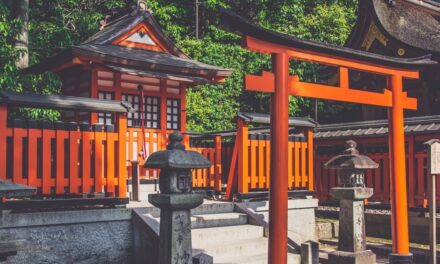Taoism is a spiritual and philosophical tradition that originated in ancient China, focused on living in harmony with the Tao (the Way), the underlying force of the universe. Taoism emphasizes simplicity, naturalness, and non-action (Wu Wei) in daily life.
Key Beliefs
- The Tao: The fundamental principle of the universe, representing the natural order and the path to harmony and balance.
- Wu Wei: “Non-action” or effortless action, aligning oneself with the flow of life rather than resisting it.
- Yin and Yang: The interplay of opposites, such as light and dark, that create balance in the universe.
- Immortality: The belief that through spiritual practices and living in harmony with the Tao, one can achieve immortality or spiritual transcendence.
Sacred Texts
- Tao Te Ching: Written by Laozi, this foundational text teaches the philosophy of living in accordance with the Tao.
- Zhuangzi: A collection of teachings and parables that expand on Taoist ideas of freedom, spontaneity, and the nature of reality.
Key Figures
- Laozi: The founder of Taoism and author of the Tao Te Ching, believed to be a sage who advocated for living in harmony with the Tao.
- Zhuangzi: A Taoist philosopher who emphasized individuality, freedom, and the relativity of human concepts.
- The Eight Immortals: Legendary Taoist figures who attained immortality and are revered in Taoist traditions.
Major Practices
- Meditation: Focused on achieving stillness and quieting the mind to connect with the Tao.
- Tai Chi and Qigong: Physical exercises designed to cultivate energy (Qi) and promote harmony between body, mind, and spirit.
- Feng Shui: The practice of arranging living spaces in alignment with natural forces to promote balance and harmony.
- Rituals: Ceremonies that honor the Tao, ancestors, and deities, often performed in temples by Taoist priests.
Places of Worship
- Taoist Temples: Sacred spaces where practitioners come to worship, meditate, and perform rituals.
- Mountains: Many Taoist temples are built on mountains, which are considered sacred and closer to the divine forces.
Symbols
- Yin-Yang Symbol: Represents the balance of opposites, a core concept in Taoist philosophy.
- The Eight Trigrams (Bagua): Symbols used in divination, representing fundamental principles of reality in Taoist cosmology.
- Crane and Pine Tree: Symbols of longevity and immortality in Taoist art and mythology.
Holidays and Festivals
- Chinese New Year: Celebrated as a major Taoist holiday with rituals to cleanse the past year and bring luck for the coming year.
- Lantern Festival: A festival celebrating the return of light and renewal, often involving lanterns and offerings to the Taoist deities.
- Ghost Festival: A time to honor and appease ancestors and spirits, with rituals to ensure peace in the afterlife.
- Birthday of Laozi: Celebrated as the birthday of the founder of Taoism, with offerings and rituals performed at temples.
Core Concepts
- Simplicity: Leading a simple life in tune with the natural rhythms of the universe.
- Humility: Practicing humility and moderation, avoiding extremes.
- Harmony with Nature: Aligning actions with the Tao by living in balance with the environment and natural forces.
The Taoist Way of Life
- Effortless Living: Living without force, stress, or excessive effort, allowing life to unfold naturally.
- Connection with Nature: Finding peace and wisdom through closeness to nature and observing its patterns.
- Inner Cultivation: Developing inner peace, wisdom, and vitality through meditation and spiritual practices.




